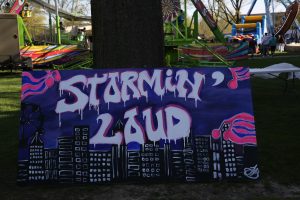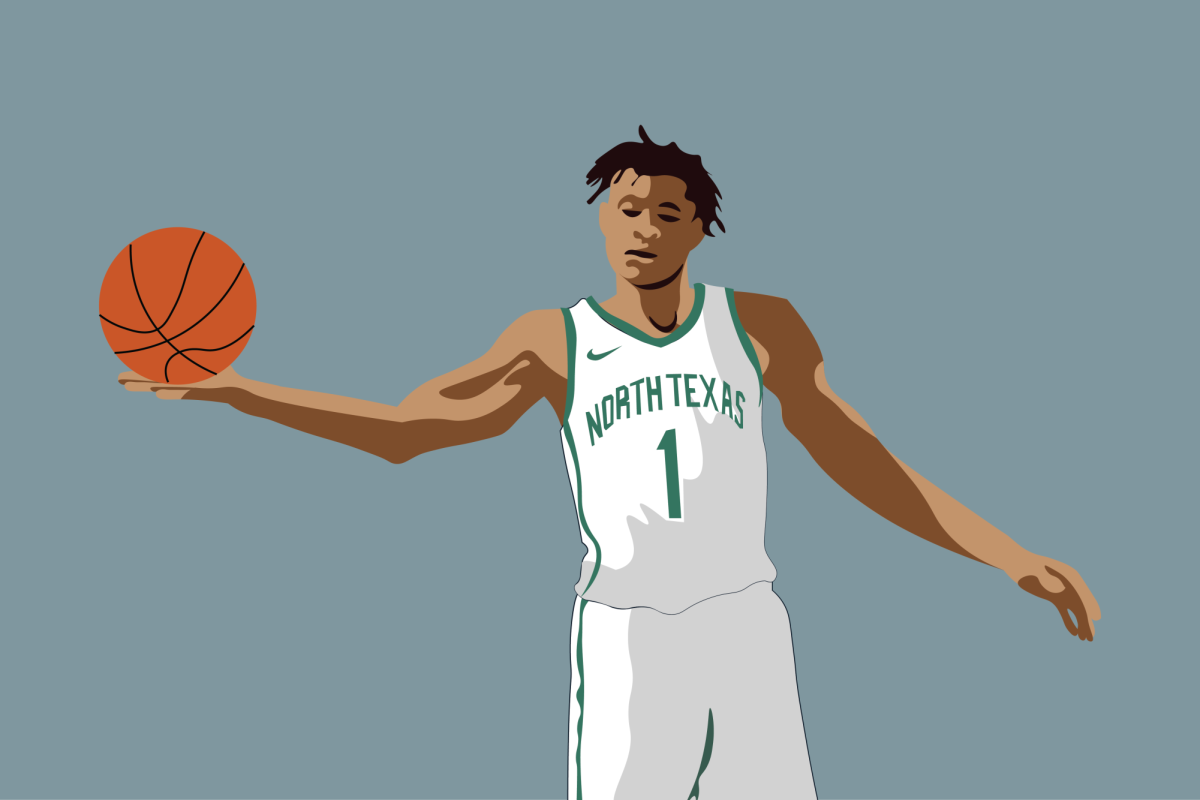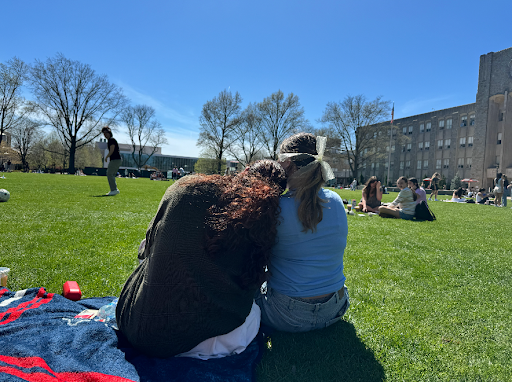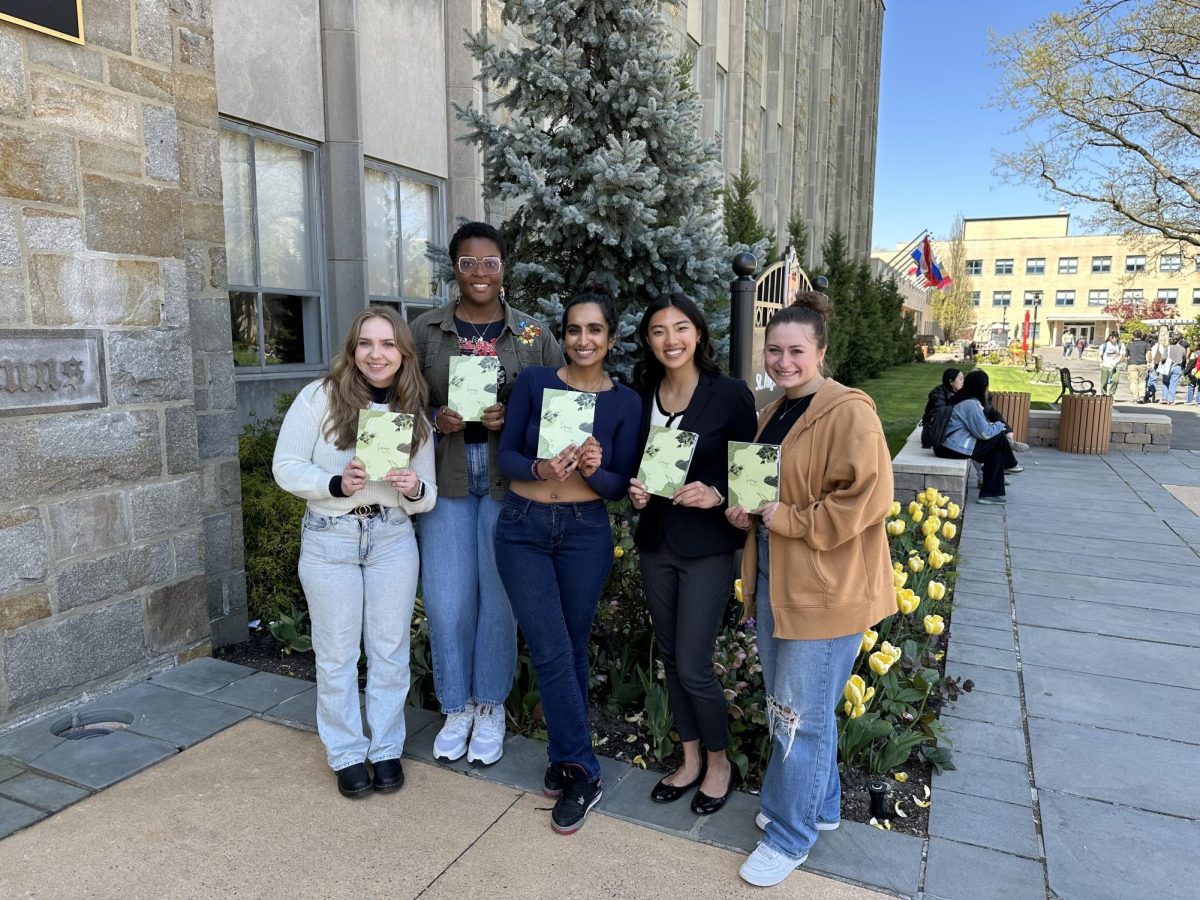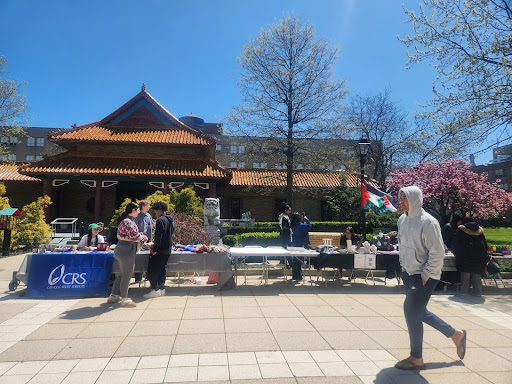Anyone frequenting the streets surrounding the Museum of Modern Art in Midtown Manhattan from Jan. 16 to Feb. 12 came upon a breathtaking nocturnal sight. Its walls were alive.
Projected upon seven of the MoMA’s facades was a bold and expressive exhibit, “Doug Aitken: sleepwalkers,” a visual narrative following the lives of five New Yorkers preparing for their night shifts.
Each character was separate, yet all became unexpectedly intertwined, through actions as routine as showers or the habitual wringing of hands, through objects as simple and symbolic as streetlights, light switches, and wheels; all within the syncopated rhythm of this great city.
The cast was eclectic, electrifying the architecture. Actress Tilda Swinton (“Chronicles of Narnia”) portrayed an office worker. Actor and musician Seu Jorge (“City of God,” “The Life Aquatic” with Steve Zissou) played an electrician. Chan Marshall (singer in Cat Power and actress from “V for Vendetta”) was a postal worker.
New York City street drummer Ryan Donowho (you may also recognize him from “Broken Flowers” and “Strangers with Candy”) was a bike messenger, and Donald Sutherland (M*A*S*H) a businessman. In an ingenious numeric parallel, every character’s segment was filmed in one of the five boroughs.
Each unique character brought a solitary 18-minute glimpse into their nights at work. As their stories, filled with ambitions and desires, sequentially mounted, the viewer began to build a relationship with not only these fictional characters, but with the city itself and the many people within it.
What started off as a simple video installment on several walls soon transformed itself into a living and breathing form, expanding upon what the MoMA called Aitken’s “theme of give and take between individuals.”
Particularly poignant were moments when the characters experienced bizarrely beautiful and dreamlike hallucinations.
Swinton, while in the midst of synchronized copying machines, was suddenly all at once in a circle of musicians, seductively swaying with her violin, her bowing arm violently sawing at the strings. Jorge, while repairing various brilliant neon signs, stopped at one point to scream at the top of his lungs.
Marshall sorted through an endless highway of envelopes and packages, and swiftly performed a pirouette, spinning faster and faster, until her surroundings seemed to fly away from her. Donowho took his soliloquy from a bike to a subway platform, calmly drumming on a plastic bucket until crescendo-ing into a deafening frenzied fervor. Sutherland, cool and composed, crossed the street, only to be violently hit by an unanticipated taxi. As if from the dead, Sutherland rose, tap dancing atop its golden yellow hood.
What truly haunts the viewer, however, is that these films are silent. The intended soundtrack is the sound of the city amidst its viewer: the rushing gust of the subways, the honking of horns, the rumble of car engines, the conversations of passersby, and possibly, the pitter-patter of the falling rain. This mysterious and constantly changing beat is, after all, the very tempo of New York City.
“Sleepwalkers” was Doug Aitken’s first public artwork in the United States, yet its theme of give and take, playing off the characters’ environment, is recurrent in his past works. In 2001, he transformed London’s entire Serpentine Gallery, from basement to roof, into a multipart video installation. But the work he is best known for is “electric earth,” which was originally created for the 1999 Venice Biennale. It consisted of a restless young man dancing through a nighttime cityscape, bringing it to rhythmic life.
In an interview on the MoMA’s online exhibition of “sleepwalkers,” Aitken was asked what he wanted a viewer to take from this exhibition.”More than anything,” Aitken replied, “I’d like an open exchange to take place. I’d like for someone walking up the street and finding this work to see something of themselves in it and to reflect on where they’re living in relationship to the shifting environment around them.”
Watching this ethereal nocturne, all at once nightmarish and beautiful, left an indelible mark on all those who happened upon it. Perhaps someone stopped to look up (an unspoken sin in this city). Maybe others followed suit to see what the fuss was all about. Or removed their earphones to listen carefully. Or reached out to stop a stranger, smile, and point. All one, all many, in the never-ending, and always changing, canvas of the five boroughs.


